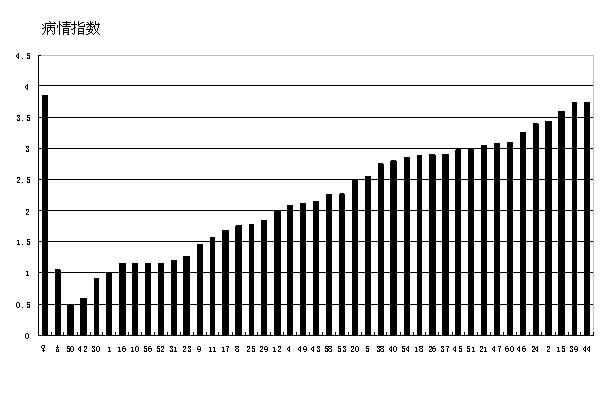Method for identifying gray mold resistance of gerbera
A technology for identification of resistance and botrytis, applied in the direction of microbial-based methods, biochemical equipment and methods, and microbial measurement/inspection, can solve the problems of plant infection and disease, long identification period, and the result is vulnerable to environmental conditions To achieve the effect of promoting the breeding and accurate identification of gerbera botrytis resistance
- Summary
- Abstract
- Description
- Claims
- Application Information
AI Technical Summary
Problems solved by technology
Method used
Image
Examples
Embodiment 1
[0040] Embodiment 1 The embodiment using petals as inoculation material
[0041] (1) Plant material
[0042] The gerbera cut-flower cultivars tested with different resistance to Botrytis cinerea were: Macy, Kaliki, Risto, Serena, CK100, 3142, 5544, a total of 7 genotypes, provided by Dutch gerbera breeding company Florist and Shreurs, and fresh petals were collected as Inoculation material;
[0043] (2) Botrytis cinerea Botrytis cinerea Culture and preparation of conidia suspension
[0044] Botrytis cinerea was cultivated with potato dextrose agar medium (abbreviation: PDA medium) Botrytis cinerea , Botrytis cinerea ( Botrytis cinerea) inoculated in the center of a 10cm-diameter petri dish with potato dextrose agar medium on a superbacteria workbench, and cultivated under continuous light for 16 hours at a temperature of 20°C to 22°C and a light intensity of 1800lx. After 3 days of cultivation, it was transferred to dark conditions for cultivation After 7 days, after t...
Embodiment 2
[0063] Embodiment 2 is the embodiment of inoculation material with complete young leaves
[0064] (1) Plant material
[0065] The gerbera cut flower cultivar and source for testing are the same as in Example 1, and the fresh complete young leaves are collected as inoculation material;
[0066] (2) Botrytis cinerea Botrytis cinerea Culture and preparation of conidia suspension
[0067] With embodiment 1.
[0068] (3) Preparation of inoculum
[0069] With embodiment 1.
[0070] (4) Inoculation
[0071] Inoculate 2 μl of the inoculum solution containing different concentrations of conidia and PD prepared in step (3) onto the young leaves described in step (1), and keep the young leaves in a plastic film, with a relative humidity of 90% to 95 %, under the condition of light intensity of 1800lx and temperature of 20℃~22℃, the disease development was observed 24 hours after inoculation, and the disease resistance of the tested materials was judged according to the disease dev...
Embodiment 3
[0086] Example 3 Test of suitable inoculation material
[0087] Except that the inoculation material described in Example 1 was tested, Example 2 also tested the gerbera leaf block and stem section, and the test method was carried out using the treatment method in Example 1.
[0088] (1) Plant material
[0089] The gerbera cut-flower cultivars tested with different resistance to Botrytis cinerea were: Macy, Kaliki, Risto, Serena, CK100, 3142, 5544, a total of 7 genotypes, provided by Dutch gerbera breeding companies Florist and Shreurs, which were fresh Collected gerbera leaf pieces and stem sections are used as inoculation materials. The leaf pieces have three types of diameters: 1.5cm, 2.5cm, and 3.5cm, and the length of the stem section is 8cm.
[0090] (2) Botrytis cinerea Botrytis cinerea Culture and preparation of conidia suspension
[0091] Botrytis cinerea was cultivated with potato dextrose agar medium (abbreviation: PDA medium) Botrytis cinerea , Inoculate the ...
PUM
 Login to View More
Login to View More Abstract
Description
Claims
Application Information
 Login to View More
Login to View More - R&D
- Intellectual Property
- Life Sciences
- Materials
- Tech Scout
- Unparalleled Data Quality
- Higher Quality Content
- 60% Fewer Hallucinations
Browse by: Latest US Patents, China's latest patents, Technical Efficacy Thesaurus, Application Domain, Technology Topic, Popular Technical Reports.
© 2025 PatSnap. All rights reserved.Legal|Privacy policy|Modern Slavery Act Transparency Statement|Sitemap|About US| Contact US: help@patsnap.com



